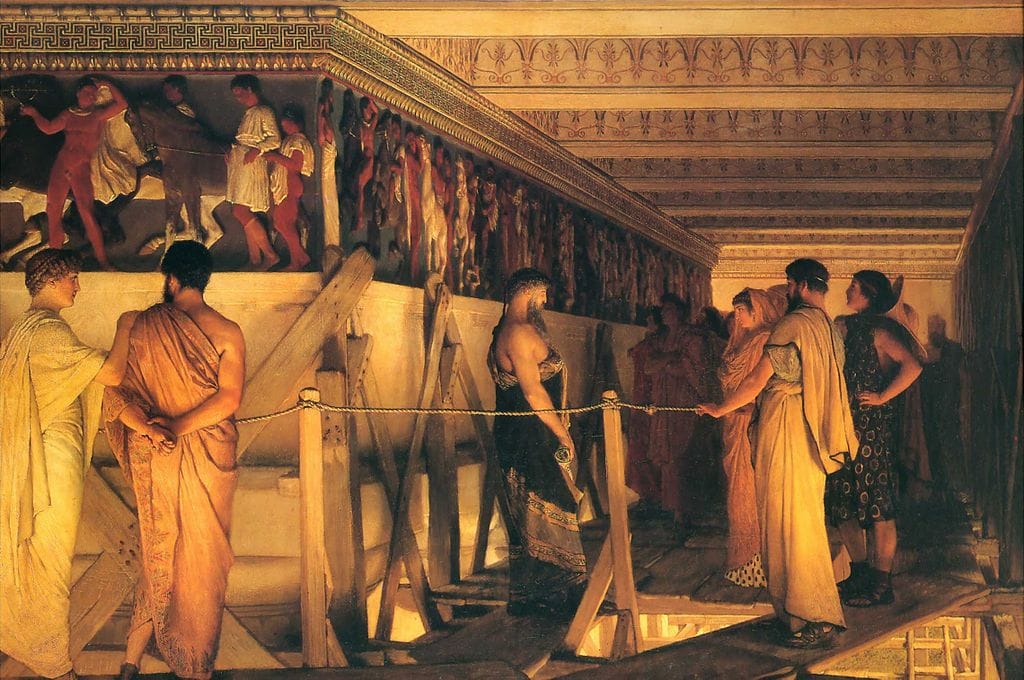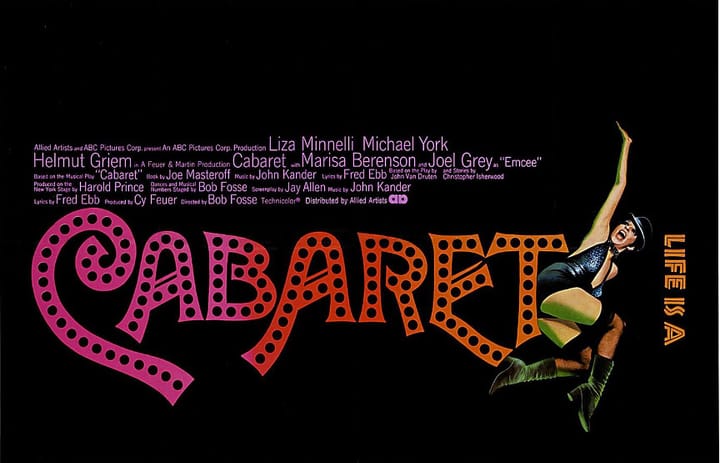Historic Painting: “Phidias Showing the Frieze…” by Alma-Tadema, 1868.
This wonderful painting depicts a famous artist from ancient Greece, and his most famous creation.

The full title of this startling painting is “Phidias Showing the Frieze of the Parthenon to His Friends,” and it was painted by Lawrence Alma-Tadema in 1868. You can’t get much more Classical than this for inspiration. In the painting, which takes place sometime in the 5th century BCE, the famous ancient Greek sculptor Phidias (ca. 480-430 BCE), the man in the dark robes at center, shows off the magnificent creation he’s made for Athens’s famous temple, the Parthenon. The friends, obviously well-to-do citizens of Athens, admire his handiwork. The frieze of the Parthenon is a long series of sculpted bas-reliefs, chiseled from marble, that adorned the top of the Parthenon beneath the eaves. The frieze, evidently depicting a ceremonial procession of the Athenians, was/is one of the great works of art of classical Greece. Historians are unsure whether it was carved in place, or carved previously and somehow hoisted up toward the roof. The majority of the frieze was removed from the Parthenon about 1800 and now resides in the British Museum in London, where Alma-Tadema saw it. (I saw it there too in the year 2000).
This wonderful painting combines the best of 19th century Classical-themed art with a sort of romantic-tinged realism. The figures do appear realistic, though stylized in a way most of us would conceive of ancient Greece, looking back on it from several thousand years. Note, however, the hairstyles on Phidias and the man on the far left, and Phidias’s beard curls. The tight kinky hair, a bit too perfect to look natural, is the way hair was often portrayed in ancient Greek art. The colors here are warm and rich, almost evocative of 19th century gaslight. I absolutely love paintings like this, for they bring to life the classical world in a very vivid and eye-catching way, like “Pollice Verso” which inspired the look of the movie Gladiator.


